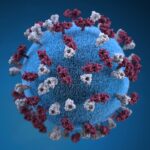
The COVID-19 pandemic has placed a substantial strain on healthcare systems in numerous countries (Dental Elf – 14th May 2020). Studies are increasingly reporting COVID-19 cross-transmission to healthcare providers. The nature of dental settings requires close proximity between the dentist and patient. The viral incubation period is 14 days, during which the virus is contagious, hence asymptomatic patients visiting the dental clinic has the potential to lead to virus transmission.
The aim of this systematic review was to provide dentists and dental auxiliary staff with insights into the risk and precautions during this COVID-19 pandemic.
Methods
The Preferred Reporting Items for Systematic Review and Meta-Analyses (PRISMA) were used to inform the methodology of this review. The COVID-19 Open Research Dataset was searched which contains all COVID-19 and Coronavirus-related research from PubMed, WHO, bioRxi and medRxiv pre-prints. An updated literature search was performed on 19th March 2020 on the World Health Organisation research database, National Institute of Health LitCOVID, Dimensions COVID-19 Research Export File publications, Medline via PubMed, Cochrane library, Google Scholar and Science Direct. There were no language restrictions.
Results
- 353 articles were retrieved across the initial database search. Following removal of duplicates and implementation of the inclusion and exclusion criteria, 13 studies were included in the review. These articles were divided into two groups, a risk assessment group (3) and recommendation group (10).
- All included studies reported that dentists were at high risk due to the close proximity between the dentist and patient. One study confirmed nine cases of dentists with COVID-19 in Wuhan, China. In addition, the virus has been found in large quantities in the saliva of infected persons.
- COVID-19 has been reported to transmit as droplet and aerosol infection which encompasses the use of the high-speed handpiece ultrasonic scaler and talking, coughing or sneezing in the dental clinic.
- The incubation period can result in infected patients attending the dental clinic without symptoms but transmitting the infection.
- The included studies recommended screening patients before entering dental facilities such as asking patients over the phone targeted questions. Screening also includes temperature check and further targeted questions related to COVID-19.
- One included study from Wuhan, China reported a 38% reduction in cases of dental treatment during the outbreak. The main cases were pulpal infection, followed by abscess and oral infection and then trauma. All studies recommended limiting dental care to emergency cases only and rescheduling routine visits.
- Mouthrinses were recommended by some of the studies along with rubber dam isolation, antiretraction handpieces and chemomechanical caries removal or an atraumatic restorative technique used instead of rotary instruments. Manual scaling is preferred over ultrasonic instrumentation.
- Minimising gag reflex is advised including with impressions and dental radiography.
- The psychological effects of COVID-19 distress can lead to TMD, periodontal disease, recurrence of aphthous ulcers and lichen planus. The authors of this study recommend remote consultations and provision of psychological stress relief rather than regular operational methods.
- Precautions for dentists such as hand hygiene, personal protective equipment and psychological support for dentists is discussed.
- Additionally, air filtration, reduced patient numbers in the clinic, surface disinfection and medical waste management are discussed.
Conclusions
The authors conclude
…Reinforcing strict infection control measures and reducing person-to-person contact is a key step in fighting the spread of this highly transmissible disease.
Commentary
This review identifies studies reporting on COVID-19 and its translation to the dental clinic. There was no quality assessment of the included studies and most were reviews with only one observational study included. The key findings emphasising the importance of cross-infection and preventative measures dental professionals must take to minimise the risk of COVID-19 occupational transmission are emphasised. This systematic review does not outline future areas for research and only provides a broad overview of select published studies. Similar rapid reviews have been published by Cochrane Oral Health on the re-opening of dental services and aerosol generating procedures and their mitigation based on a review of international guidance documents (Clarkson et al 2020 and Clarkson et al 2020). In addition a Rapid Review of Aerosol Generating Procedures in Dentistry including considered judgements from a multidisciplinary group was published by the Scottish Dental Clinical Effectivenes Programme (SDCEP 2020). There is rapidly emerging evidence evolving our understanding of both the disease and its management, therefore the most updated research should be used to inform clinical practice.
Links
Primary paper
Turkistani KA, Turkistani KA. Dental risks and precautions during COVID-19 pandemic: A systematic review. J Int Soc Prevent Communit Dent. 2020 10:540-8. Available from: https://www.jispcd.org/text.asp?2020/10/5/540/292949
Other references
Clarkson J, Ramsay C, Richards D, Robertson C, & Aceves-Martins M; on behalf of the CoDER Working Group (2020). Aerosol Generating Procedures and their Mitigation in International Dental Guidance Documents – A Rapid Review.
Clarkson et al (2020). Recommendations for re-opening dental services: a rapid review of international resources.
SDCEP Rapid Review of Aerosol Generating Procedures in Dentistry 2020.
Dental Elf – 14th May 2020
Re-opening of dental services: A rapid review of international sources
Picture Credits
